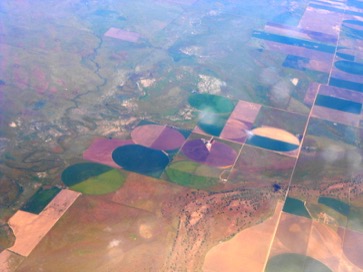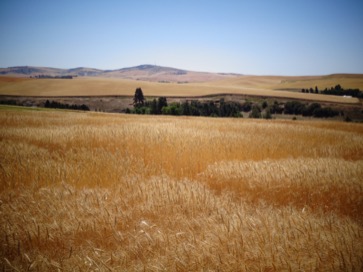What is Agronomy?
 Every day, everyone is affected by agronomy. The food you eat, the coffee you drink, the ethanol-based gas in your car, the grass on the golf course, the natural fibers of the clothing you wear—all are products of agronomy and the work of agronomists.
Every day, everyone is affected by agronomy. The food you eat, the coffee you drink, the ethanol-based gas in your car, the grass on the golf course, the natural fibers of the clothing you wear—all are products of agronomy and the work of agronomists.
Agronomy is a science and a practice that looks at agriculture from an integrated, holistic perspective. In agronomy, it’s important to understand the properties of the soil and how the soil interacts with the growing crop; what nutrients (fertilizers) the crop needs and when and how to apply these nutrients; the ways that crops grow and develop; how climate and other environmental factors affect the crop at all stages; and how best to control weeds, insects, fungi, and other crop pests.
If that weren't enough, another huge consideration in agronomy is how to grow crops effectively and profitably while conserving natural resources and protecting the environment.
In short, growing crops requires collaborations among many, many fields, including the traditional soil, plant, and weed sciences, as well as related disciplines such as ecology, entomology, climatology, and economics. The best crop production methods are always grounded in scientific research. As a result, they are by nature continually evolving and improving.
Agronomy can also be grouped by the type of crop grown. Many agronomists specialize in one or more types of crops.
Food crops
Food crops, in agronomic terms, are different from feed crops (see below). They are the crops we are most used to seeing in produce sections, as well as vegetable- and grain-based processed foods (oils, starches, proteins, and flours). As you can see from the information below, wheat, soy and corn cover the most farmland in the United States. However, most of the wheat you buy comes in the form of bread, pasta and other products made from wheat flour. The same goes for corn and soy.
Many people envision that vegetable crops are grown on small farms, for farmers markets. In reality, most vegetables are grown on large, specialized farms. They have many custom-designed pieces of machinery to help ease the labor. Many fields may cover hundreds of acres, and farms may be spread over several states. This helps ensure a steady supply of fresh produce to the market.
In the United States, major vegetable crops include potato, lettuce, peppers, tomatoes, squash, sweet corn, green beans and watermelon (watermelon is included here as it is grown like a row crop, on the ground).
Feed crops
Feed refers to grains and other vegetable products (like soy) that are grown to meet the nutritional needs of livestock. Corn that is grown for cows and cattle is much different than the sweet corn you are used to picking up at farmer’s markets or your grocery store. Feed crops include “small grains” such as wheat, oats, barley, and rice. They also include taller grain crops like corn and sorghum.
Alfalfa and other forage crops are grown for their stems, leaves, and other edible plant parts. Livestock either graze these crops in fields or eat stored forages.
Fiber crops
You might not think of your cotton jeans as coming from a crop – but cotton is big business! And, cotton growers benefit from the researchers and practitioners who work with them. Cotton needs water, nutrients, and all the other things that crops need to grow good yields. Hemp, which was banned from production in the United States in the 1960s (except by special permission), is also a fiber crop.
Beginning in the 1990s, the United States has been working toward more energy independence. Biofuels and biodiesel crops became of interest in many states. There are even incentive programs to grow these crops. They are grown to be processed into ethanol and biodiesel. Read more about biofuels here.
What is Sustainable Agronomy?

We define secure and sustainable food production as growing adequate nutritious and affordable food for the world’s growing population while protecting the environment.
There are 7.5 billion1 people on our planet (2017). They need food production that ensures the safety of natural resources. These resources may be air, water, soil, and more. The population is expected to be close to 10 billion1 by 2050. We need to find the practices and solutions that preserve resources and feed future generations.
Agronomists formed the backbone of the Green Revolution. They applied the latest scientific research in genetics and agriculture to develop new varieties of crops. These superior crops had desirable genetic traits that helped them resist diseases and adapt to a variety of growing conditions. They also benefited from improved agricultural techniques used by farmers in the United States and other nations.
Learn more at the American Society of Agronomy's Sustainable, Secure Food blog!

